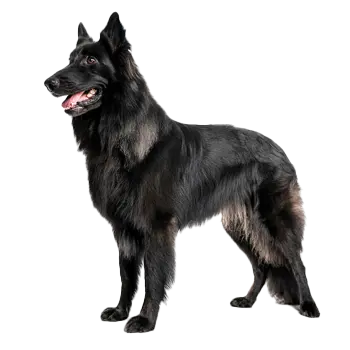The Belgian Shepherd is known by various names depending on geographic location and kennel club classification, reflecting different approaches to recognizing this versatile breed. In Belgium, the country of origin, the breed is called Chien de Berger Belge (Belgian Shepherd Dog), encompassing all four coat varieties as a single breed. This unified classification reflects the breeds' shared ancestry and common foundation, as different coat types historically appeared in the same litters and all varieties share identical breed standards except for coat characteristics.
The four varieties are distinguished by coat type and color: the Groenendael has a long black coat, the Malinois has a short fawn coat with black mask, the Tervuren has a long fawn coat with black overlay, and the Laekenois has a rough, wiry fawn coat. Each variety is named after a Belgian location significant to its development. The Malinois takes its name from the city of Malines (Mechelen in Flemish), where this short-coated variety was particularly refined. The Groenendael is named after the village of Groenendael, home to Nicholas Rose who established the long black-coated line. The Tervuren is named after the Belgian village of Tervuren. The Laekenois takes its name from the Château de Laeken near Brussels.
Recognition and classification of Belgian Shepherds varies significantly between international kennel organizations, creating one of the more complex classification situations in the dog world. The Fédération Cynologique Internationale (FCI), which sets breed standards for most countries worldwide, recognizes the Belgian Shepherd as a single breed (Chien de Berger Belge) with four varieties. Under FCI classification, all four varieties are judged to the same breed standard in Group 1 (Sheepdogs and Cattledogs), differing only in coat specifications. This reflects the traditional Belgian approach where the varieties are considered one breed. Most European countries, South America, Asia, and other FCI member nations follow this classification.
In contrast, the American Kennel Club has recognized the Belgian Shepherd varieties as separate breeds since 1959. The AKC currently recognizes three varieties as distinct breeds: Belgian Sheepdog (Groenendael), Belgian Tervuren, and Belgian Malinois, all classified in the Herding Group. The Belgian Laekenois was not initially recognized and only achieved full AKC breed status in 2020 after years in the Foundation Stock Service. This separation into distinct breeds reflects American breeding practices where the varieties have been bred separately for decades, developing into somewhat distinct populations.
The United Kennel Club, another major American registry, takes a different approach, recognizing all four varieties as a single breed called Belgian Shepherd with four coat variety designations. The Canadian Kennel Club follows the American practice of recognizing the varieties as separate breeds. The Kennel Club in the United Kingdom recognizes Belgian Shepherd Dogs with four varieties: Groenendael, Laekenois, Malinois, and Tervuren, maintaining connection between varieties while acknowledging their differences.
This complex classification situation occasionally creates challenges for breeders, particularly those working with imported dogs or breeding across international lines. A Groenendael bred in Europe may produce Tervuren-colored puppies, which is acceptable under FCI rules as all colors appear in one breed. However, in America, such puppies might not be registerable as Belgian Sheepdogs (Groenendael) and could potentially be registered as Tervurens instead. Despite these classification differences, all organizations agree on the breeds' shared heritage, exceptional working ability, and similar temperament and characteristics.

